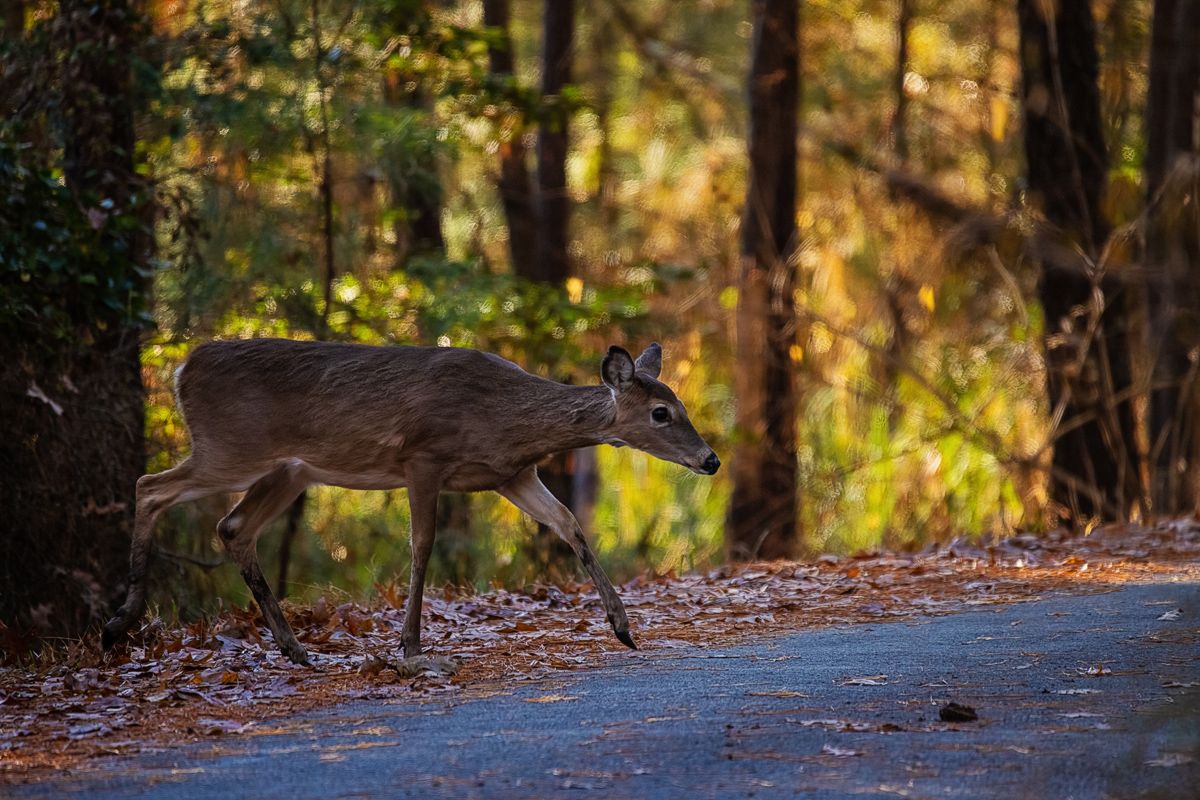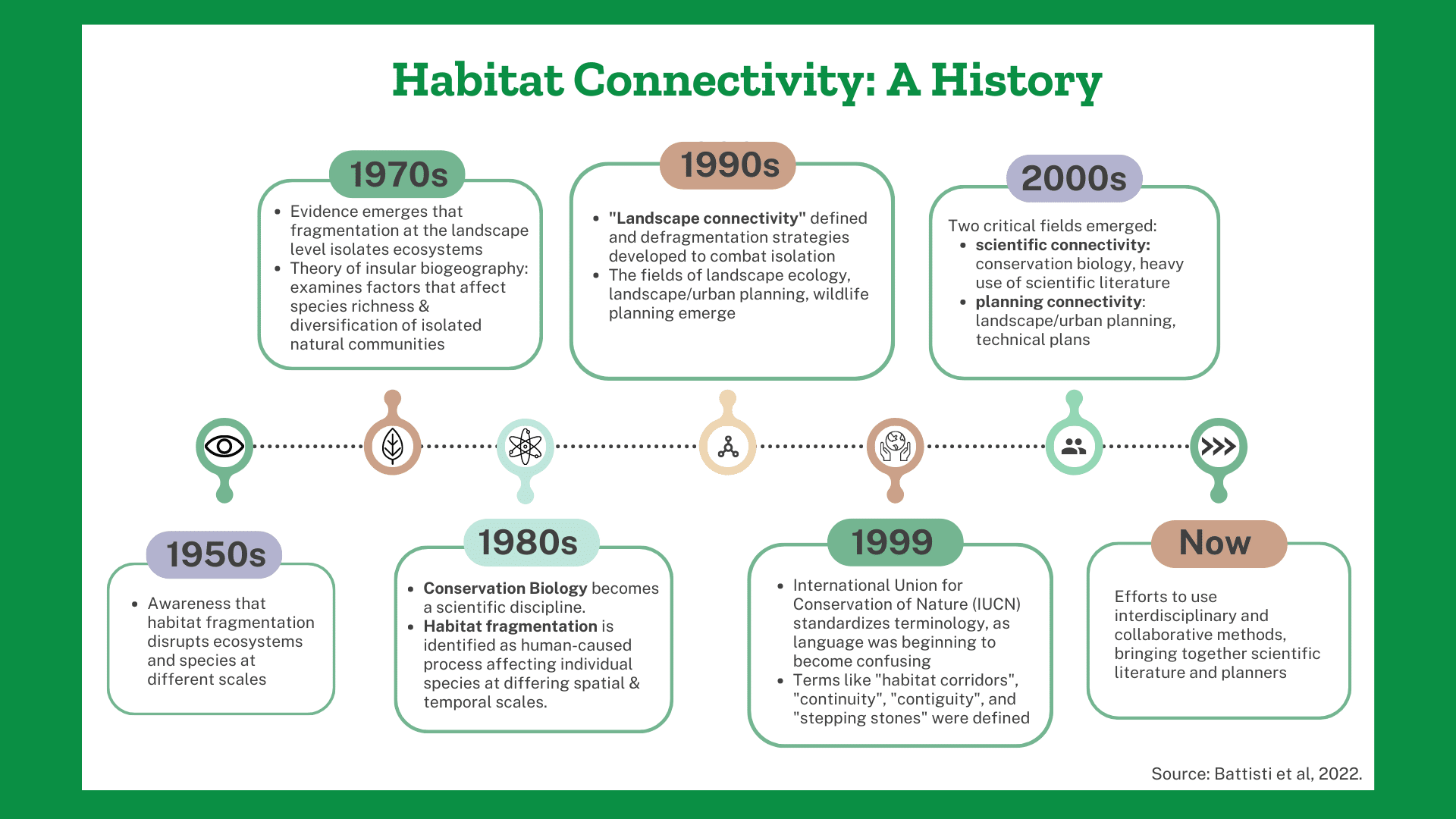Improve Habitat Connectivity
New!
Check out our new Habitat Connectivity Hub, a StoryMap showcasing connectivity and wildlife crash reduction projects led by the partners of the Virginia Safe Wildlife Corridor Collaborative. Stay tuned for upcoming education and advocacy webinars on how to use this tool for more resilient communities, less wildlife-vehicle conflict, and healthier ecosystems in Virginia!
Wild Virginia has been leading the way, bringing people together to improve habitat connectivity in Virginia. To do this, we are guided by four major tasks.
1. ADVANCE A VISIONARY STRATEGY FOR BOTH AQUATIC AND TERRESTRIAL ECOLOGICAL CONNECTIVITY.
-
- Identify and coordinate with individuals and areas most impacted by fragmentation
- Empower public contribution via citizen science and comment opportunities
2. SUPPORT THE VIRGINIA SAFE WILDLIFE CORRIDORS COLLABORATIVE (VSWCC) TO INSPIRE WILDLIFE CROSSING & CORRIDOR EFFORTS IN VIRGINIA.
-
- Convene regular meetings with educational speakers
- Support collaboration, as well as synchronization of, efforts across states and regions
- Develop and present educational outreach materials
3. ADVANCE NEW POLICY TO PROMOTE ECOLOGICAL CONNECTIVITY.
-
- Submit annual policy goals in Virginia Conservation Network Briefing Book
- Develop relationships with key decision makers
- Push integration of crossing and corridors into state budgets
4. UTILIZE EXISTING REGULATORY SYSTEMS TO ADVANCE ECOLOGICAL CONNECTIVITY.
-
- Target opportunities to advance connectivity through existing regulatory mechanisms
- Push for the full implementation of Virginia’s Wildlife Corridor Action Plan (WCAP)
- Create materials to aid county & city planners integrate connectivity solutions
WHAT IS HABITAT CONNECTIVITY?
Habitat connectivity is critical to ensuring a sustainable future for Virginia. Here are a few definitions of habitat connectivity and a look into some of the history of habitat connectivity research and efforts.
“Habitat connectivity refers to how and to what degree distinct patches of habitat are connected, which can influence the distribution, genetic diversity, and health of animal and plant populations.” –National Oceanic and Atmospheric Administration
“Habitat connectivity is defined as the degree to which the landscape facilitates or impedes animal movement and other ecological processes, such as seed dispersal.” -National Wildlife Federation
What should you do if you are in a wildlife-vehicle conflict?
Despite all of our caution and care, there are times when accidents happen—and in areas of high animal activity, animal-vehicle collisions are sometimes unavoidable. But unavoidable does not have to mean tragic. After ensuring the safety of the people in your car, there are steps that you can take to lend a helping hand to wildlife when your paths collide, or at the very least to clear the scene so that no one else gets hurt. Learning and sharing these often-unknown processes not only makes for an easier conscience and more efficient damage control, but also contributes to a culture of habitat connectivity: when we know how to use our resources to fix inevitable collisions, these collisions become more manageable, and the results less destructive to wildlife populations. Read more, including an easy to follow flow-chart, on our blog post here.
Wild Virginia Habitat Connectivity Program Milestones
- In 2020, Wild Virginia helped to pass legislation to create a Wildlife Corridor Action Plan (WCAP). The WCAP aims to identify and protect wildlife corridors in Virginia, helping both people and wildlife move more safely.
- In 2021, Wild Virginia worked to pass SB1274 that would build on the Wildlife Corridor Action Plan and make it even stronger. Read more here.
- In 2022, Wild Virginia hired a full-time Habitat Connectivity Program Director to focus solely on wildlife corridor, crossings, and connectivity concerns throughout the state.
What’s happening now? 2024 Policy Recommendations
Wildlife corridors and habitat connectivity are crucial for ensuring ecosystem health. Wildlife must be able to move to find food and water resources, genetically diverse mates, and climate refugia. Wildlife crossings improve connectivity and reduce dangerous and costly wildlife-vehicle collisions. Virginia took steps forward in 2020 and 2021 passing bills to study and prioritize wildlife corridors. Now, we must invest in the areas identified in the forthcoming Virginia Wildlife Corridor Action Plan by creating a state funding mechanism that leverages the new and available federal dollars unlocked by the Infrastructure Investment and Jobs Act.
Create a Wildlife Corridor Grant Fund and appropriate $5M to it over the biennium to attract additional private investments to that fund and help leverage the many new and expanded federal funding grants currently available to VDOT and the DWR for funnel fencing, culvert improvements, and other wildlife crossing and passage infrastructure projects. Create a regulatory framework that requires VDOT to include wildlife passage features in known connectivity hotspots whenever bridge or culvert improvement projects are planned.
Download the full Virginia Conservation Network policy briefing: Our Common Agenda.
Sign Our Habitat Connectivity Petition!
Habitat Connectivity History
What should you do if you are in a wildlife-vehicle conflict?
Despite all of our caution and care, there are times when accidents happen—and in areas of high animal activity, animal-vehicle collisions are sometimes unavoidable. But unavoidable does not have to mean tragic. After ensuring the safety of the people in your car, there are steps that you can take to lend a helping hand to wildlife when your paths collide, or at the very least to clear the scene so that no one else gets hurt. Learning and sharing these often-unknown processes not only makes for an easier conscience and more efficient damage control, but also contributes to a culture of habitat connectivity: when we know how to use our resources to fix inevitable collisions, these collisions become more manageable, and the results less destructive to wildlife populations. Read more, including an easy to follow flow-chart, on our blog post here.

